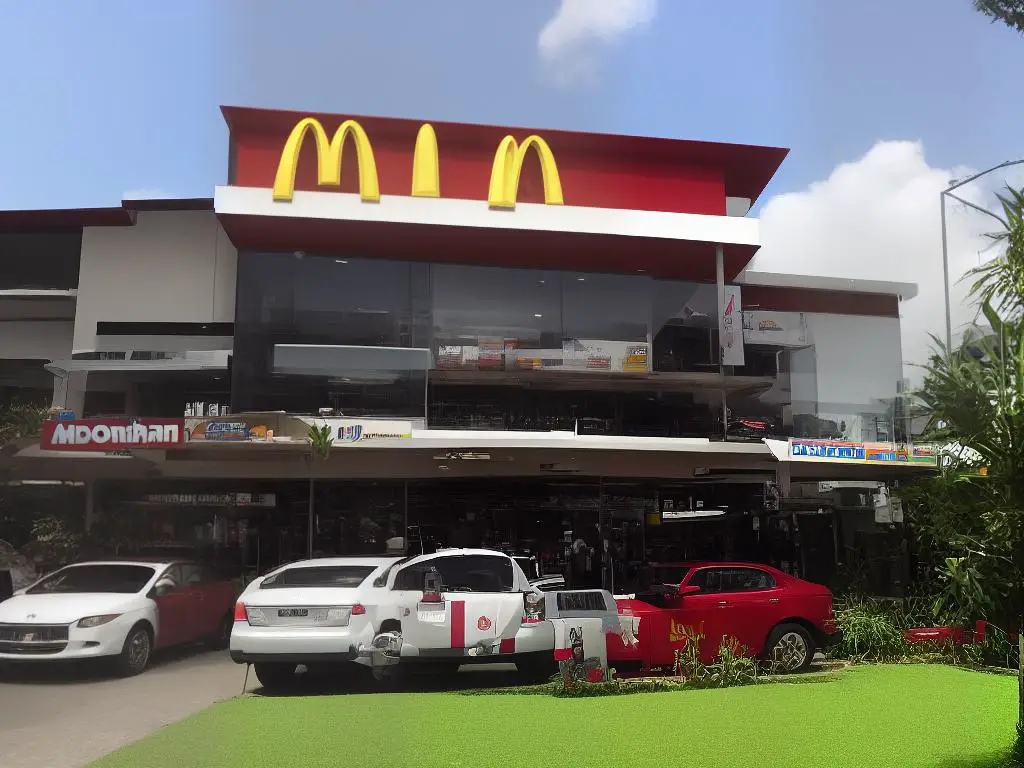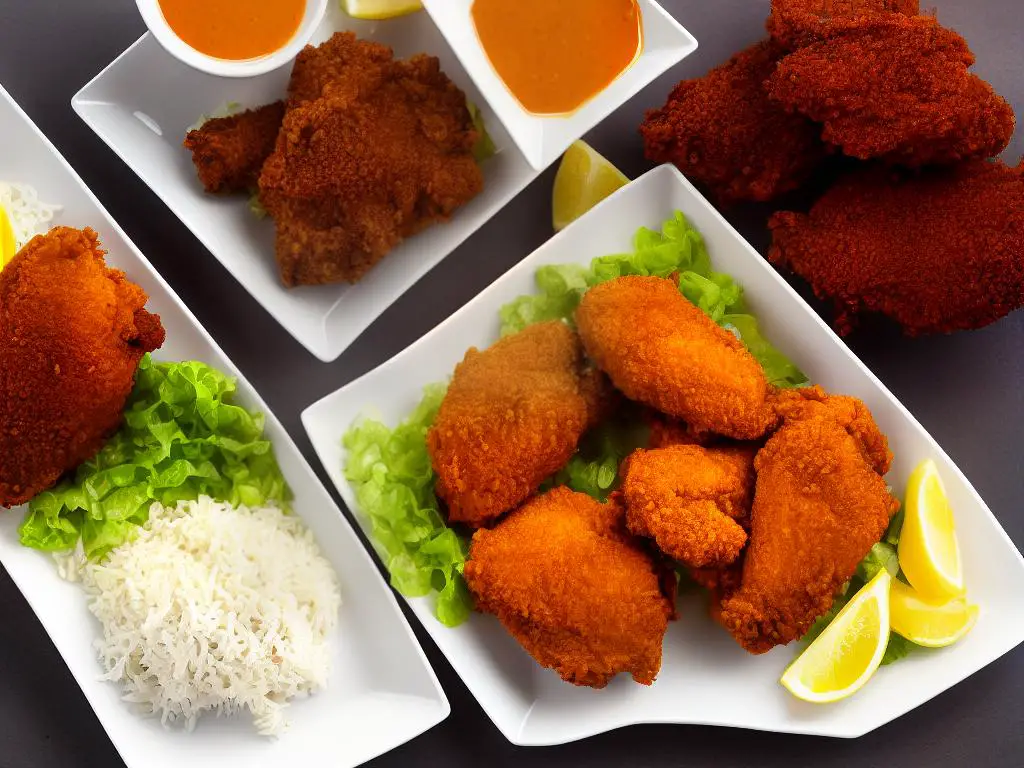In the vast landscape of global fast-food chains, McDonald’s stands out as a unique entity, altering its menu to seamlessly blend with the food culture of each distinct region. Foremost among such region-specific successes is Indonesia, where the Fried Chicken and Rice Meals from McDonald’s have claimed a significant chapter in the local food narrative. This investigation sheds light on how a quintessentially American entity such as McDonald’s has infiltrated the Indonesian food market with sophisticated adaptations, helping it secure immense popularity. The article will delve into the intricacy of the unique Indonesian McDonald’s offerings, specifically concentrating on their signature fried chicken and rice meals. The interesting blend of global and local culinary aesthetics thus emerging offers a intriguing food study that merits exploration.
Popularity & Adaptation of McDonald’s in Indonesia
Experiencing McDonald’s in Indonesia: Understanding the Influence of Local Cuisine
McDonald’s, a recognised brand in every corner of the globe, established its first outpost in Indonesia in 1991, in Sarinah, Jakarta. Since then, it has ardently embraced and adapted itself to the indigenous Indonesian culture and tastes, which has been an intrinsic part of its vast popularity. A significant element contributing to this success story is its strategic inclusion of the popular local Indonesian dish of fried chicken and rice meals in their menu.
The Cultural Weight of Fried Chicken and Rice in Indonesia
Known locally as Nasi Ayam Goreng, fried chicken and rice holds the position of a staple diet for Indonesians. This dish is typically savoured at all meal times during the day, making McDonald’s decision to introduce this into their menu a masterstroke. By doing so, McDonald’s succeeded in pleasing the local palate, while seamlessly integrating a familiar element in their otherwise foreign dining experience.
McDonald’s Menu: Catering to Regional Tastes
McDonald’s has created a reputation for itself as a fast-food maverick, demonstrating flexibility and innovation in adjusting its menu to reflect regional palate. Without exception, in Indonesia, McDonald’s astutely understood that to win the hearts of the locals, they needed to offer meals that were both recognisable and relatable. Thus, was born Nasi Ayam McD – a meal consisting of fluffy white rice, crisp chicken and a fresh salad. Another widely-loved variant is the spicier Nasi Ayam Spicy McD, honouring Indonesians’ love for spicy food. The distinction between traditional fried chicken and McDonald’s version lies in the frying technique and the unique seasoning used, endowing the latter with an unforgettable crispy texture and flavour.
Acknowledging the Popular Appeal of McDonald’s
With the introduction of the rice and chicken dishes, McDonald’s has exponentially increased its popularity among Indonesians. These versions of the nation’s traditional favourites have not only been welcomed by adults but have also found a fanbase with the younger generations. Any festivity or gathering, no matter how big or small, feels incomplete without a serving of McDonald’s Nasi Ayam Goreng. The easy accessibility and affordable pricing of McDonald’s further underscores its swelling popularity.
Active and effective marketing is another significant factor. McDonald’s Indonesia engages relentlessly in promotional strategies to spotlight these meals. From billboards, print and digital advertisements to TV commercials, McDonald’s Indonesian menu is aptly highlighted. These promotions underline the brand’s adaptability and alignment with local preferences, while also instilling a sense of nostalgia and national pride.
In conclusion, McDonald’s demonstrates a remarkable example of business adaptability and understanding of local preferences in Indonesia. By appealing to the Indonesian love for fried chicken and rice, McDonald’s has indubitably carved a significant niche for itself in the Indonesian fast-food market. Commitment towards sustainable growth, market stake and providing relatable, affordable, and high-quality food further accentuates McDonald’s understanding of the Indonesian market.

Detailed Analysis of McDonald’s Indonesian Fried Chicken and Rice Meals
Moving Forward with McDonald’s in Indonesia
McDonald’s, widely known for its immense success globally, owes its fame to its dynamic ability to cater to diverse regional tastes and preferences, and Indonesia is no exception. One shining example of this adaptation is the significantly popular Indonesian fried chicken and rice meals found on the McDonald’s menu. This analysis attempts to delve into the intricacies of these meals, such as their ingredients, cooking method, nutritional information, and how they encapsulate and represent the authentic Indonesian flavours.
Menu Variety
There are several versions of the fried chicken and rice meals available at McDonald’s Indonesia. A standard option is fried chicken paired with white steamed rice and accompanied by a choice of several Indonesian sambals (a type of hot and spicy relish), such as sambal terasi (shrimp paste) and sambal matah (raw sambal). Another popular option is Ayam Goreng McD, which translates to McDonald’s Fried Chicken, a unique recipe with a distinct Indonesian flavor profile that sets it apart from its global counterparts.
Ingredients & Cooking Method
The Indonesian McDonald’s fried chicken uses a variety of spices and ingredients typical of the local cuisine. The chicken is marinated with a mixture of garlic, coriander, tamarind, turmeric, and galangal to give it a distinctive Indonesian flavor. The chicken is then battered and deep-fried until it achieves a golden, crunchy exterior while maintaining a tender and juicy inside. For the rice, locally sourced grains are meticulously steamed to achieve a soft yet firm consistency that complements the fried chicken.
Incorporation of Local Flavors
McDonald’s Indonesian fried chicken carries a unique appeal as it blends global fast food appeal with unmistakably Indonesian flavors. For instance, the aroma and flavor profile of the Ayam Goreng McD carry hints of local spices that are not found in a standard McDonald’s fried chicken meal in other countries. The option to pair the chicken with sambal adds another layer of Indonesian identity, placating to the locals’ love for spicy food.
Nutritional Value
While fried chicken and rice is not conventionally viewed as a healthy meal due to the serving of deep-fried meat, McDonald’s Indonesia makes efforts to balance nutrition in their meals. The white rice offers a good source of energy from carbohydrates, and the chicken, despite being fried, provides substantial protein. However, like all fast food, it is suggested to be consumed in moderation as part of a balanced diet.
Conclusion
McDonald’s in Indonesia offers the fast-food classics that people love, with a unique local twist. Incorporating locally sourced ingredients, they provide the ever-popular fried chicken and rice meals, which blend the convenience of fast food and the traditional Indonesian flavours. Despite their nutritional values not being suitable for daily intake, as occasional indulgence, they can be a part of a balanced diet and serve as a delightful exploration of the Indonesian cuisine culture.

Comparison & Contrast with McDonald’s Global Menu
An Intriguing Blend of Global and National by McDonald’s Indonesia
As a world-renowned fast-food powerhouse, McDonald’s excels in branding and showcasing a varied menu that caters to the myriad palates across the globe. In Indonesia, they’ve skilfully adapted to the country’s rich culinary tradition by merging it with their hallmark offerings. The Fried Chicken and Rice Meals offered by McDonald’s Indonesia are a resounding testament to this tantalising cultural and culinary convergence.
Bringing Local Palate into the Menu
McDonald’s approach to its food offerings in Indonesia reflects a thoughtful integration of the local palate into its menu. The core of the local cuisine is nasi (rice), a staple in most Indonesian meals, and ayam goreng (fried chicken), a dish loved throughout the country. Recognising the popularity of these foods, McDonald’s chose to incorporate them into its menu as the Fried Chicken and Rice Meals, bringing a blend of traditional Indonesian food and the familiarity of the McDonald’s brand.
The Fried Chicken and Rice Meal
A quintessential McDonald’s Indonesia meal, the Fried Chicken and Rice Meal, comes in a variety of combo options that include one or two pieces of fried chicken, a plate of rice, and a choice of beverages. The fried chicken, crispy on the outside and tender inside, followed by a bite of steamed rice is reminiscent of the local ‘Ayam Goreng’ dish, delivering that pleasurable punch of local spices that Indonesians love.
Distinctive from the Global Menu
As compared to McDonald’s global menu, the Fried Chicken and Rice meals are a distinctive feature of McDonald’s Indonesia. While the global menu includes staple items like the Big Mac, fries, and McNuggets, in places like Indonesia, these items share the platform with local favourites. The inclusion of dishes like the Fried Chicken and Rice Meal exemplifies McDonald’s commitment to catering and adapting to varying tastes across the globe.
Connecting with Local Food Habits and Traditions
The presence of these locally inspired dishes on the menu in different markets underlines McDonald’s strategic flexibility. It demonstrates their understanding that in order to succeed in a diverse market like Indonesia, it is crucial to connect with local food habits and traditions. This connection is made by providing familiar comforts, like fried chicken and rice meals.
The Surprising Delight of Local Flavours
In stark contrast, the universal McDonald’s menu keeps a central focus on its signature items like Big Macs and Chicken McNuggets. But its adaptation in different markets introduces local staples that coexist with the classic items. This strategy allows customers to enjoy the surprise of indulging in local flavours within the established and trusted environment of a global fast food chain, making the dining experience truly unique – a characteristic McDonald’s fans worldwide have come to cherish.
Seamless Fusion of Global and Local Flavours
Thus, the inclusion of the Fried Chicken and Rice Meals in McDonald’s Indonesia menu is a masterstroke that blends international tastes and local flavours seamlessly. It not only goes to show McDonald’s ability to be flexible and adapt to varying tastes and cuisines around the world, but it also showcases the respect the brand has for the culinary traditions and preferences of its customers. Irrespective of location, McDonald’s continues to nourish its universal appeal while locally reinventing itself, one dish at a time.

By carving out the unique position in the Indonesian fast food market, McDonald’s iconic Fried Chicken and Rice Meals provide a fascinating model for global businesses. They illustrate a compelling instance of how a brand can thrive in a foreign market by striving to cater to distinct local tastebuds, without forsaking its essential global identity. Furthermore, the stark differences between the globally uniform McDonald’s offerings and its Indonesian-specific menu underscore the food chain’s calculated approach to market expansion. The success story of McDonald’s in Indonesia rests on the inclusion of a locally loved treat like fried chicken and rice, and forms an interesting study of culture-adaptive business strategy in the global culinary landscape.
